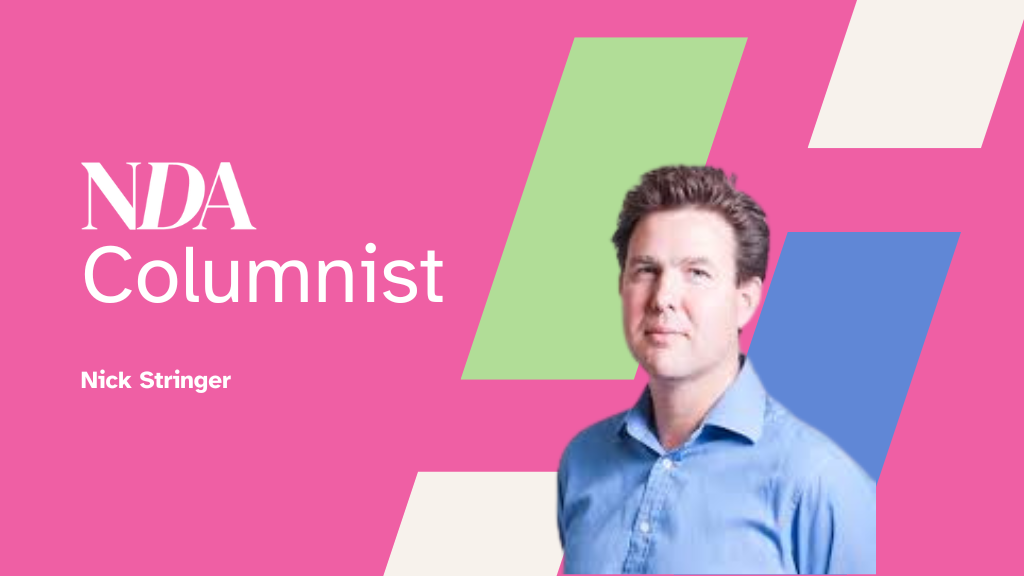By Nick Stringer, a global technology, public policy, and regulatory affairs adviser. His extensive experience includes serving as the former Director of Regulatory Affairs at the UK Internet Advertising Bureau (IAB UK).
“I fear the day when the technology overlaps with our humanity. The world will only have a generation of idiots”
– Albert Einstein
Over the years, I’ve seen my kids delight in social media’s wonders while facing its challenges. Social media has made them laugh, play, learn, get angry, and feel sad. While being a parent doesn’t make someone an expert on how children navigate the digital world, it also doesn’t mean parents’ concerns aren’t valid. Parents are worried about the social media world that their children are immersed in.
While well-intentioned, proposed laws aimed at prohibiting young people from using social media (or access to social media platforms) are misguided. A related, although separate debate, revolves around banning phone use in schools. Various global initiatives reflect differing approaches, yet the idea of banning social media for those under 16 seems to be gaining traction. As someone with over 20 years of experience in tech public policy, I recognise that policymakers often default to the simplest regulatory measures to address societal concerns about our digital landscape. However, what we truly need is an informed, balanced, and proportionate global debate about young people’s use of social media. This will enable them to benefit from social media while being safeguarded from its negative effects. But how can we achieve this? Are there countries adopting a more balanced and pragmatic approach that could serve as a model for others? Can we effectively regulate social media to protect young people without putting it ‘back in the box’?
This is the latest article in the ‘ByteWise Insights’ series, examining society’s complex ties with technology and proposing public policy solutions. We have explored the need for greater global cooperation, the need for more regulation of political advertising, the advertising industry’s role in supporting quality journalism and news, the importance of technology education for the public, the potential for advertisers to play a more significant role in protecting young people in the digital world, and what the political party election manifestos told us – if anything – about future technology public policy in the UK. This piece wades into the thorny debate on how society might preserve the benefits of social media whilst protecting young people from its negative side.
Social Media: A Young Person’s Playground?
Social media is integral to every aspect of a young person’s life. Whether it’s TikTok, YouTube, Gas, Weibo, Instagram, Snapchat or WeChat, 77% of 15-16-year-olds around the world use a social media app every day. Despite existing restrictions prohibiting the use of many social media services among those under 13 years of age, 28% of 9-11-year-olds around the world also use a social media app every day.
For many young people, social media serves as the modern playground, offering invaluable life skills. It helps expand connections, particularly for those who find it challenging to socialise in the ‘real world’. It also fosters a better understanding of the world, strengthens relationships with distant family and friends, and hones essential digital communication and literacy skills. Additionally, it provides a platform for finding support and advocating for causes that matter to them. In many respects, it surpasses the traditional school playground. However, like any playground, it requires rules to prevent bad behaviour and supervision by a responsible figure. Those who repeatedly violate the rules should face consequences, such as being temporarily banned. Nevertheless, we do not prevent children from using the playground altogether. As parents, we rely on schools to ensure the playground is a safe environment for our children.
Or A Sinister World?
But is social media truly a modern playground? The negative impacts are well-known and extend far beyond those of a typical school playground: bullying, self-harm, addiction, and anxiety are just a few of the serious issues linked to social media use. Unlike traditional public forums, the effects of social media are complex and pervasive. ‘Big tech’ is often criticised for exacerbating these problems by fostering an ‘attention economy’ that exploits people’s need for social validation, and heightens mental health issues. While the digital landscape inherently brings societal uncertainties, one thing is clear: increased regulation of social media is inevitable. Our challenge is not to stop this regulation – nor should we – but to ensure it is proportionate, balanced, and enforceable.
The Prohibition Debate
Across the globe, policymakers are either implementing or discussing bans on social media use for those under 16. This trend is evident in several US states. In Australia, New Zealand, and the UK, they are considering restrictions for young people under 16. However, in Australia, the Office of the e-Safety Commissioner has advised against a ban, warning that age-based restrictions might lead young people to use less regulated, non-mainstream services, thereby increasing their exposure to serious risks. This concern is shared by many parents worldwide, not just in Australia.
The Need for a Proportionate Approach
It seems evident that social media lacks sufficient rules and enforcement, a gap that clearly needs addressing. Some countries are taking more of a proportionate approach, such as in the UK and Australia. In the UK, the Online Safety Act 2023 aims to protect children from harmful content, such as pornography, bullying, and material promoting self-harm and eating disorders. This law will be enforced by the communications regulator, Ofcom, which – following consultation – will issue codes of practice for social media companies (and others) to comply with the new regulations for both illegal and legal content. Likely new requirements include robust age checks, safer algorithms, effective moderation, strong governance and accountability, and more choices and support for young people, such as clear and accessible information and tools to help them stay safe. Additionally, the Age Appropriate Design Code (or ‘children’s code’) mandates obligations for social media companies, such as age verification, prohibiting techniques that encourage the sharing of personal data, and providing a high level of privacy by default. A new UK Government may add to this, such as with the announcement of a Digital Information and Smart Data Bill which (among other things) aims to allow people to use a digital ID to buy age-restricted products.
A similar approach is being taken in Australia, which is unsurprising given the Memorandum of Understanding (MoU) on online safety and security between the two countries. Australia is pioneering initiatives such as its A$6.5 million age assurance trial, which will complement the codes of practice being developed by the Office of the eSafety Commissioner. Additionally, Australia is looking to emulate the UK’s efforts by creating its own version of the UK’s children’s code.
These are complex discussions, but the outcome could provide a balanced template for the rest of the world to follow. As I’ve previously suggested, the largest brands on the planet, which use social media platforms to advertise their products and services, can complement the legal obligations for social media companies by holding them to account through their purchasing power. However, calls for prohibition remain strong, and with national elections approaching in both Australia and the US, as well as a new Government in the UK flexing its political muscles, these voices will undoubtedly continue to be prominent. They should be resisted.
Beyond the Bathwater: Finding The Value
This is an important societal debate. While implementing a ban might seem straightforward and beneficial, it could inadvertently drive young people toward unregulated services lacking protections. Wouldn’t it be more sensible to enhance protections on mainstream social media platforms instead? Parents also play a crucial role. Parenting is challenging, and doing so in the digital world adds another layer of complexity. Nevertheless, parents must stay vigilant to help their children navigate this intricate landscape. As the old English saying goes, we should not throw the baby out with the bathwater.









